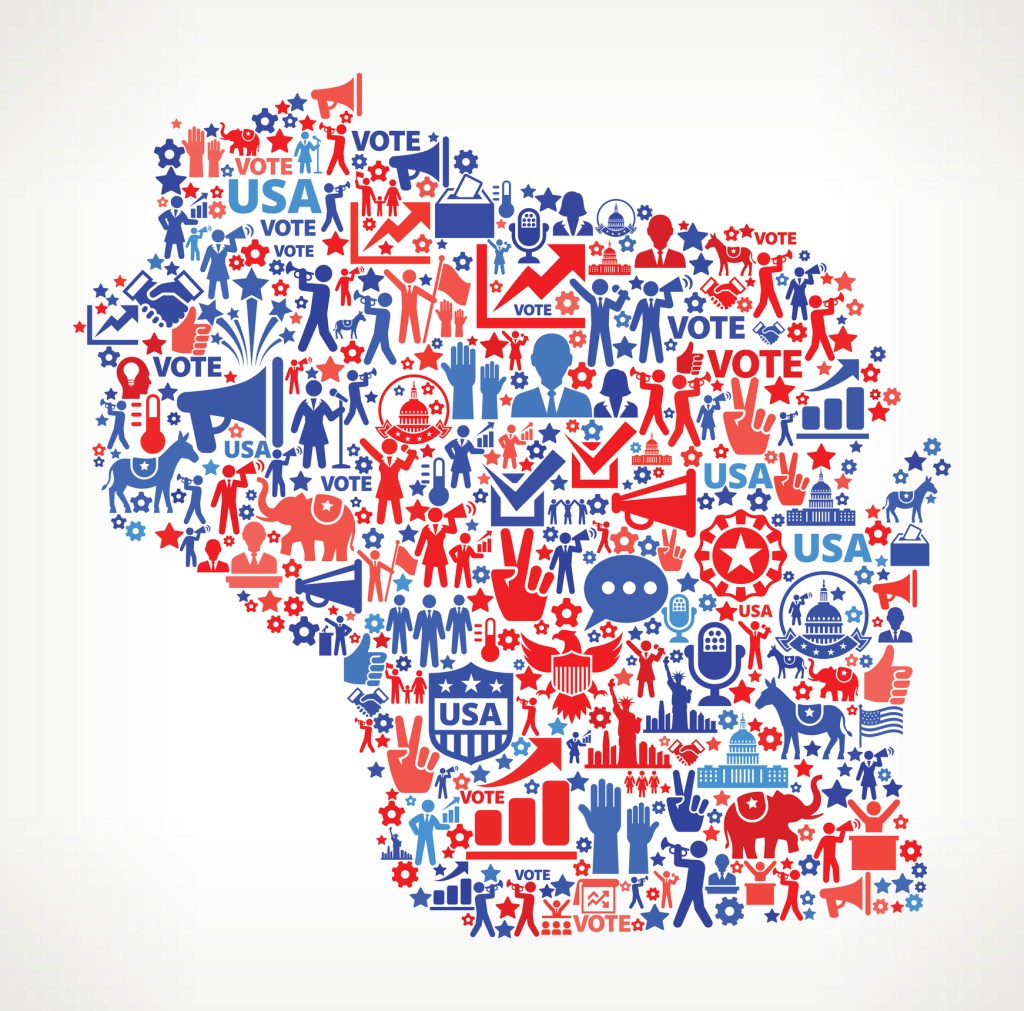What the Supreme Court’s gerrymandering case ruling could mean for future elections


On Monday, the Supreme Court announced that it would take up an appeal that could have implications on voting districts and elections across the country. A lower court decided last year that Wisconsin’s voting districts were drawn up with the goal of strengthening the Republican Party, and ordered the state to re-draw the districts. Supporters of the current district lines are appealing to the Supreme Court in hopes that the decision would be reversed, while challengers of the original district drawings have applauded the lower court’s decision.
The case marks the first time in more than 10 years that the Supreme Court will hear a case related to political gerrymandering, and justices could take this opportunity to formally agree on a metric for what constitutes the unlawful drawing of districts.
We asked Supreme Court expert Dan Urman, director of the undergraduate minor in law and public policy at Northeastern, to discuss the prevalence of gerrymandering as well as what this case could mean for future elections nationwide.
How widespread is the issue of gerrymandering?
Gerrymandering has long been an issue in American politics. The concept dates at least back to 1812, when Massachusetts Governor Elbridge Gerry signed a bill with legislative maps that favored his party. A resulting district (in Essex County, north of Boston) looked like a salamander, causing an observer to call it a “Gerrymander.” These districts did not require equal populations until the 1960s. The Supreme Court, led by Chief Justice Earl Warren, held in 1962 and 1964 that state and federal district should have roughly equal populations. While the districts have not been exactly the same size, the Court required “good faith efforts.”
Since then, the Court has usually intervened when gerrymandering involved the impermissible use of voters’ race, not voters’ political party (the Court struck down a North Carolina plan for using race earlier this year). In recent years, with increasingly sophisticated technology around voter data, partisan gerrymandering has become more precise and entrenched. In fact, the issue is so prevalent that President Obama has joined former Attorney General Eric Holder to combat gerrymandering on a voter turnout, legal, and ballot initiative basis. President Obama has called these efforts his highest political priority now that he is out of office. The Wisconsin appeal is the latest in a series of partisan gerrymandering cases that date back to at least 1986, when the Court said in Davis v. Bandemer that it was willing to hear cases related to unlawful partisan gerrymandering.
What impact does this practice have on voters and on elections?
By turning the notion that voters choose legislators on its head, partisan gerrymandering potentially violates the equal protection clause. Many people have argued that the drawing of districts to benefit one party over another is fundamentally harmful to democracy. When people are grouped into districts comprised only of like-minded voters, we see people move to the extremes on the political spectrum, which has become more prevalent in today’s political climate. This means elected officials need to take positions pleasing to the party base, so they can avoid losing to an even more extreme challenger in a political primary.
In many cases, including the Wisconsin case before the Supreme Court, the proportion of Republicans or Democrats in office may differ significantly from the actual number of voters from either party in each district. In 2012, for example, Wisconsin Republicans captured over 60% of the state legislative seats in 2012 despite losing the statewide vote. This pattern repeated itself across the country.
Partisan gerrymandering can make people in the minority party feel politically alienated, and contributes to lower voter turnout. Since voting districts are drawn after each census, which is only taken once every 10 years, these issues have the potential to affect voters and elections for a decade in the future. This means that opponents of partisan gerrymanders often initiate lawsuits like the one the Court agreed to hear.
Now that the Supreme Court has agreed to hear the case, what happens next?
The next step is for the Court to schedule oral arguments, which will take place this fall, likely in November or December. Once that process is complete, the court will deliberate and likely hand down a decision as early as spring 2018, and definitely by June 30 of 2018. All eyes will be on Justice Anthony Kennedy in this case. In the last partisan gerrymandering case, Vieth v. Jublirer (2004), Justice Kennedy cast the tiebreaking vote, holding that the challengers to Pennsylvania maps lacked a “workable” standard to review partisan gerrymanders. However, Kennedy, speaking for himself, said that a future case might meet the standard. The Wisconsin case contains a mathematical formula called the “efficiency gap,” which measures wasted votes. The efficiency gap is similar to the Supreme Court’s “one person, one vote” approach.
What are some of the possible implications of this case?
The Supreme Court has never clearly stated when political gerrymandering becomes unlawful. Depending on how the Court rules, there is a possibility that the Justices will formally adopt a a standard to determine where unlawful gerrymandering has occurred. With this standard, litigants would race to federal courthouses in order to challenge existing districts, but the major changes would take place during the drawing of voting districts after the 2020 census. It would likely shift political power back to the Democratic Party on a state and federal level.





